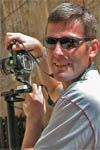Caption
Mauthausen-Gusen slave labour camp was the hub of a large group of Nazi Germany concentration camps that was built around the villages of Mauthausen and Sankt Georgen an der Gusen in Upper Austria, roughly 20 kilometres east of the city of Linz.
The camp operated from the time of the Anschluss, when Austria was annexed into the German Third Reich in early 1938, to the beginning of May 1945, at the end of the Second World War. Starting with a single camp at Mauthausen, the complex expanded over time and by the summer of 1940 Mauthausen had become one of the largest labour camp complexes in the Nazi Germany-controlled part of Europe, with four main subcamps at Mauthausen and nearby Gusen, and nearly 100 other subcamps located throughout Austria and southern Germany, directed from a central office at Mauthausen. As at other Nazi concentration camps, the inmates at Mauthausen–Gusen were forced to work as slave labour, under conditions that caused many deaths. The subcamps of the Mauthausen complex included quarries, munitions factories, mines, arms factories and plants assembling Me 262 fighter aircraft. In January 1945, the camps contained roughly 85,000 inmates.The death toll remains unknown, although most sources place it between 122,766 and 320,000 for the entire complex.
The Mauthausen–Gusen camp was one of the first massive concentration camp complexes in Nazi Germany, and the last to be liberated by the Allies. The two main camps, Mauthausen and Gusen I., were labelled as Grade III (Stufe III) camps, which meant that they were intended to be the toughest camps for the incorrigible political enemies of the Reich.
Mauthausen never lost this Stufe III classification. In the offices of the Reich Main Security Office it was referred to by the nickname Knochenmühle – the bone-grinder (literally bone-mill). Unlike many other concentration camps, which were intended for all categories of prisoners, Mauthausen was mostly used for extermination through labour of the intelligentsia – educated people and members of the higher social classes in countries subjugated by the Nazi regime during World War II.
The main camp of the complex in Mauthausen is now a museum. On 9 August 1938, prisoners from Dachau concentration camp near Munich were sent to the town of Mauthausen in Austria, to begin the construction of a new slave labour camp. The site was chosen because of the nearby granite quarry, and its proximity to Linz. Although the camp was controlled by the Nazi German state from the beginning, it was founded by a private company as an economic enterprise.The owner of the Wiener-Graben quarry (the Marbacher-Bruch and Bettelberg quarries) was a DEST Company: an acronym for Deutsche Erd– und Steinwerke GmbH. The company was led by Oswald Pohl, who was a high-ranking official of the Schutzstaffel (SS). It rented the quarries from the City of Vienna in 1938 and started the construction of the Mauthausen camp. A year later, the company ordered the construction of the first camp at Gusen. The granite mined in the quarries had previously been used to pave the streets of Vienna, but the Nazi authorities envisioned a complete reconstruction of major German towns in accordance with plans of Albert Speer and other proponents of Nazi architecture, for which large quantities of granite were needed. The money to fund the construction of the Mauthausen camp was gathered from a variety of sources, including commercial loans from Dresdner Bank and Prague-based Escompte Bank; the so-called Reinhardt's fund and from the German Red Cross. Mauthausen initially served as a strictly-run prison camp for common criminals, prostitutes and other categories of Incorrigible Law Offenders. On 8 May 1939 it was converted to a labour camp which was mainly used for the incarceration of political prisoners.



 Tap or click the zoom icon in the bottom right corner of the picture to switch between in-page and fullscreen view
Tap or click the zoom icon in the bottom right corner of the picture to switch between in-page and fullscreen view